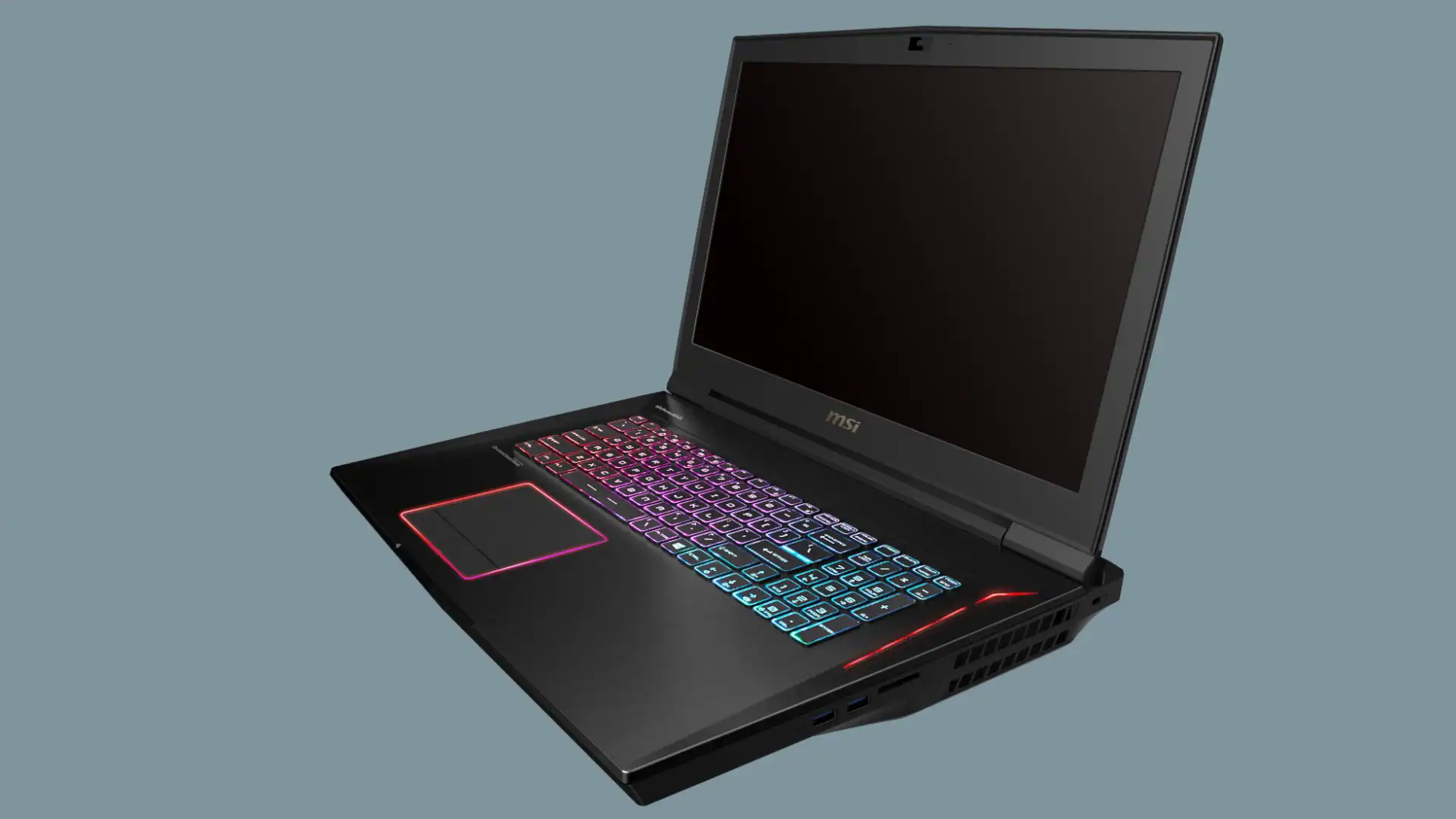If your gaming laptop screen is black but the laptop appears to be on, it could be a hardware or software issue. Here’s a step-by-step guide to help you troubleshoot and fix it:
Step-by-Step: Fix a Black Screen on a Gaming Laptop
1. Hard Reset the Laptop
This clears temporary power or display glitches.
- Turn off the laptop completely.
- Unplug the power adapter and remove the battery (if removable).
- Hold the power button for 30 seconds.
- Plug the power back in (leave battery out if removable).
- Try turning it on.
2. Check the Brightness and Display Output
- Press the brightness keys (usually F1–F12 with a sun icon).
- Try Fn + F4 or Windows + P to toggle between display modes:
- PC screen only
- Duplicate
- Extend
- Second screen only
If the screen responds, it was likely switched to an external monitor accidentally.
3. Use an External Monitor
This will help identify if it’s a screen issue or a deeper problem.
- Connect your laptop to an external monitor via HDMI, DisplayPort, or USB-C.
- Power on the laptop.
- If the external monitor displays normally:
- Your laptop’s screen, backlight, or display cable might be damaged.
4. Boot into Safe Mode
If it works in Safe Mode, a software or driver issue is likely.
- Hold Shift and click Restart from the power menu.
- Choose: Troubleshoot > Advanced Options > Startup Settings > Restart
- Select 4 – Enable Safe Mode
- If screen works now:
- Roll back recent graphics driver updates.
- Uninstall third-party GPU tuning software (like MSI Afterburner).
5. Reset Graphics Driver
- Press Windows + Ctrl + Shift + B. This resets the graphics driver. If it works, you’ll hear a beep and the screen may flicker back on.
6. Check RAM or Internal Hardware
Loose RAM can cause boot/display failures.
- Power off and unplug the laptop.
- Open the back panel.
- Reseat the RAM by removing it and snapping it back in securely.
- Reboot and test.
7. Perform a BIOS Reset
A misconfigured BIOS can cause screen issues.
- Turn off the laptop.
- Hold Windows + B, then press and hold the power button for 5–10 seconds.
- Release all buttons.
- Wait for BIOS recovery screen.
If your laptop has a dedicated BIOS recovery shortcut, check your manual.
8. Reinstall or Repair Windows
If hardware is fine but the screen is still black after the boot logo:
- Boot from a USB Windows installer.
- Choose Repair your computer > Startup Repair
- If that fails, consider a fresh reinstall of Windows.
If None of These Work
It may be a hardware failure involving:
- A damaged screen
- Faulty GPU
- A loose display cable
- Failing motherboard
In that case, professional repair is recommended—especially for gaming laptops with discrete GPUs or soldered parts.
Fixing Black Screen While Gaming
If your screen goes black while gaming, that usually points to GPU, overheating, or driver-related issues. Here’s how to fix it:
1. Update or Reinstall GPU Drivers
Outdated or corrupted drivers are the most common cause.
- Go to Device Manager > Display Adapters.
- Right-click your GPU and choose Uninstall device (check “Delete driver software”).
- Then reinstall the latest driver from:
Avoid Windows Update drivers—they’re often outdated.
2. Turn Off Overlays and Background Apps
- Disable GeForce Experience, Radeon Overlay, Discord Overlay, Steam Overlay, etc.
- Exit apps like MSI Afterburner, Razer Synapse, and third-party monitoring tools.
They can conflict with games or crash the display pipeline.
3. Check for Overheating
- Use tools like HWMonitor or Core Temp to check CPU/GPU temps.
- Clean vents, fans, and heat sinks.
- Play on a hard surface, not on a bed or blanket.
- Undervolt or lower graphics settings if your laptop runs too hot.
Overheating can cause black screens or shutdowns to prevent damage.
4. Lower In-Game Graphics Settings
- Reduce resolution, texture quality, shadows, ray tracing, etc.
- Disable V-Sync and DLSS or FSR as a test.
High settings can overload the GPU or cause instability on marginal hardware.
5. Power Settings and GPU Mode
- Go to Control Panel > Power Options > High Performance.
- In NVIDIA Control Panel or AMD Software, make sure the dedicated GPU is used for games.
- On laptops with Optimus (hybrid graphics), try disabling integrated graphics (in BIOS or GPU settings) to force the game to use the dedicated GPU.
6. Check RAM and Storage Health
- Run Windows Memory Diagnostic or MemTest86 for RAM.
- Use CrystalDiskInfo to check SSD/HDD health.
Bad RAM or storage can cause crashes and black screens during heavy loads.
7. Event Viewer & Reliability Monitor
Check for system errors right after the crash:
- Open Event Viewer > Windows Logs > System or Application.
- Look for critical events around the time of the crash.
- Or go to Control Panel > Security and Maintenance > Reliability Monitor.
8. Run System File Check
Corrupted system files can trigger game instability.
sfc /scannow
Run from Command Prompt (Admin).
9. BIOS and Chipset Drivers
Outdated BIOS or motherboard firmware can cause GPU instability, especially with newer drivers.
- Visit your laptop brand’s support site to update BIOS and chipset drivers.
10. Reseat or Replace RAM/GPU (If Possible)
If you’re using a gaming laptop with upgradeable RAM or a modular GPU (rare), reseating or swapping components can help.
Understanding Gaming Laptop Hardware
Gaming laptops offer a powerful mix of performance and portability. They let you play the latest games anywhere. The best gaming laptops pack high-end graphics cards and fast processors into sleek designs.
Gaming laptops now rival desktop PCs in power while staying mobile. Top models feature cutting-edge RTX graphics cards that enable ray tracing for stunning visuals. High refresh rate displays up to 165 Hz or more provide smooth gameplay for fast-paced titles. Prices start around $2,000 for premium gaming laptops with top specs.
When choosing a gaming laptop, consider the screen size, resolution, and refresh rate. Popular options include 14-inch, 15.6-inch, and new 18-inch models. Look at the CPU and GPU to ensure they can handle your favorite games. Don’t forget about battery life and cooling, which are key for gaming on the go.
Key Takeaways
- Gaming laptops combine desktop-level power with portability
- Top models feature RTX graphics cards and high refresh rate screens
- Consider size, specs, and cooling when picking a gaming laptop
Gaming laptops pack powerful components into compact designs. These machines need to balance performance, cooling, and portability. Let’s look at the key hardware that makes gaming laptops tick.
Central Processing Units (CPUs)
CPUs are the brains of gaming laptops. Intel and AMD make the most common processors. Intel’s Core i7 and i9 chips are popular choices. AMD’s Ryzen processors offer strong performance too.
The latest CPUs have multiple cores and high clock speeds. This helps run games and other programs smoothly. More cores let you do more tasks at once. Higher clock speeds make everything faster.
Some top CPUs for gaming laptops:
- Intel Core i9-14900HX
- AMD Ryzen 9 7945HX
- Intel Core i7-13700H
These chips deliver great gaming performance. They also handle streaming and video editing well.
Graphics Processing Units (GPUs)
GPUs are crucial for gaming laptops. They handle the heavy lifting of rendering game graphics. NVIDIA and AMD make most laptop GPUs.
NVIDIA’s GeForce RTX 4000 series is currently top-tier. The RTX 4090 is the fastest mobile GPU available. It can run games at high settings and resolutions.
AMD’s Radeon RX 7000M series competes with NVIDIA. These GPUs offer good performance at lower prices.
Some gaming laptops use NVIDIA’s DLSS 3 tech. This boosts frame rates in supported games. It helps laptops run games smoothly at higher resolutions.
Memory and Storage Solutions
RAM and storage affect how fast games load and run. Most gaming laptops have at least 16GB of RAM. High-end models may have 32GB or more.
For storage, SSDs are standard. They’re much faster than hard drives. This means quicker boot times and faster game loads. Many laptops have 512GB or 1TB SSDs.
Some gaming laptops have both an SSD and a hard drive. The SSD holds the operating system and favorite games. The hard drive stores other files and less-played games.
Display Technologies
Gaming laptop screens have improved a lot. Many now offer high refresh rates of 144Hz or more. This makes games look smoother.
Common resolutions include:
- 1920×1080 (1080p)
- 2560×1440 (1440p)
- 3840×2160 (4K)
Higher resolutions look sharper but need more GPU power. Many gamers choose 1440p as a good balance.
Some laptops use OLED or Mini-LED screens. These offer better contrast and colors than standard LCD displays. They can make games look more vivid.
Battery Life and Portability
Gaming laptops are getting more portable. But powerful hardware uses lots of power. This means battery life is often short when gaming.
Most gaming laptops last 2-4 hours when playing games on battery. For regular use, they might last 6-8 hours. Lighter gaming laptops may have better battery life.
Size and weight vary. 15-inch models are common. They balance screen size and portability. 14-inch laptops are more compact but may have less powerful hardware.
Laptop thickness affects cooling and performance. Thinner laptops may throttle performance to avoid overheating. Thicker ones often have better cooling and can run at full speed longer.
Selecting the Right Gaming Laptop
Picking the best gaming laptop means looking at key specs and features. It’s about finding the right mix of power and price to fit your needs.
Balancing Performance and Budget
Gaming laptops come in many price ranges. Budget options start around $800 with an RTX 4050 GPU. These can play most games at medium settings. Midrange laptops cost $1,200 to $2,000. They offer better GPUs like the RTX 4060 or 4070. High-end models go over $3,000. These pack top CPUs and GPUs for the best gaming.
When choosing, think about the games you play. Esports titles need less power than new AAA games. Also factor in how long you want the laptop to last. Spending more now can mean your laptop stays useful longer.
Key Features and Brand Offerings
Look for a good CPU and GPU first. Intel and AMD make great gaming CPUs. For GPUs, NVIDIA’s RTX 4000 series is top-notch. RAM is also key – 16GB is the minimum for gaming. Storage-wise, get at least a 512GB SSD.
Popular brands include:
- Lenovo Legion: Great all-around value
- ASUS ROG: Known for innovation
- Razer: Sleek designs
- Alienware: High-end powerhouses
- MSI: Wide range of options
Check for extras like high refresh rate screens, RGB keyboards, and good cooling systems.
Laptop Gaming Experience
Screen size affects portability and gaming feel. 15-inch laptops balance size and power well. 17-inch models offer more immersion but weigh more. New 14-inch gaming laptops like the ASUS ROG Zephyrus G14 pack a punch in a small size.
Keyboard quality matters for long gaming sessions. Look for deep key travel and anti-ghosting. Good speakers enhance gaming without headphones. Webcams are useful for streaming.
Ports are crucial too. Look for USB-A, USB-C, and HDMI. Thunderbolt 4 is great for connecting external GPUs. Lastly, battery life in gaming laptops is often short. Most need to be plugged in for best performance.







